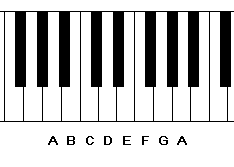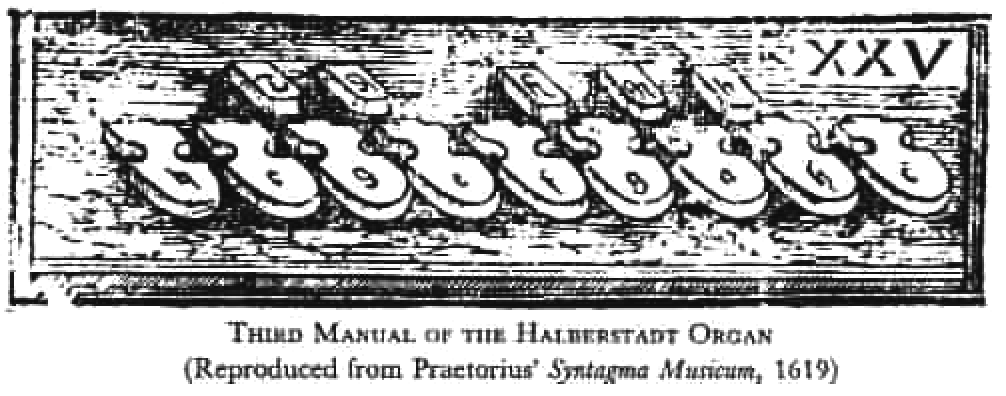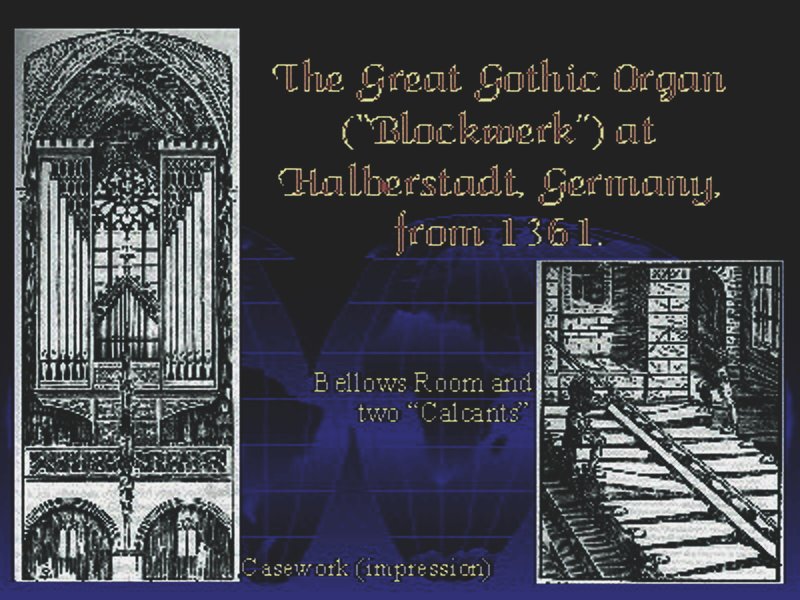Private lessons available in person in San Diego, or online using Discord: composition, music-theory, tuning-theory, piano, and all woodwinds (sax, clarinet, flute, bassoon, recorder). Current rates US$ 80 per hour (negotiable). Send an email to: monzojoe2 (AT) gmail. Also please consider making a donation to Tonalsoft using the PayPal button at the bottom of this page. Thank you.
Halberstadt keyboard
The standard keyboard found on pianos, organs, harpsichords, clavichords, and most electronic synthesizers and samplers.
It is designed in a repeating (i.e., periodic) pattern of alternating white and black keys, where the black keys are grouped in sets of 2s and 3s with one space in between each group. The white keys are all linearly adjacent. The pattern repeats every 12 keys, so that there are 7 white keys and 5 black keys in the complete pattern. For this reason, it is also often referred to as "7-white/5-black".
In standard 12-edo tuning each adjacent key, whether it changes color or not, gives an an interval of a semitone, with the full pattern of 12 keys spanning an octave. One octave of it looks like this:

With the exception of less expensive non-retunable electronic instruments, any key of this keyboard may be tuned to any pitch within the limitations of the instrument's design. So one often finds 12-tone meantones or well-temperaments on pianos, harpsichords, clavichords, and pipe organs, and any number of alternative tunings on electronic instruments that support this capability. (A database of the latter can be found at Microtonal Synthesis.)
The name comes from the earliest known example of a "keyboard" (eack key was actually a large board played with the fist) which had the 7-white/5-black arrangement of "black keys", and which was the third manual of an organ built by Nicholas Faber in Halberstadt, Germany in 1361:
 (click for larger image)
(click for larger image)
The front case and bellows room of the Halberstadt organ are shown in the etchings below:

The tonalsoft.com website is almost entirely the work of one person: me, Joseph Monzo. Please reward me for my knowledge and effort by choosing your preferred level of financial support. Thank you.
Please make a donation to help keep Tonalsoft online. A recurring monthly contribution would be apprecitated.
Thank you!
